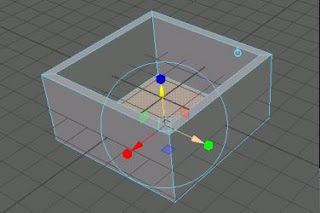Water Research Simulation in Unreal and Maya - Summary and Conclusions
On this entry I'll try to summarize my experience with different water simulations techniques to date. Note that this is the result of a student's research only so please put big quotes on everything I'm saying.
The techniques
researched can be divided into two sections depending on the subject:
-
Simulation of the
water planes, for “static” waters.
-
Simulation of
“dynamic” water, for water splash effects.
Also they can
be divided depending on the technology:
-
Maya
-
Unreal Engine
The most relevant techniques for the
Animation Project were:
-
Unreal Engine’s
Starter Pack Water materials, for water planes.
-
Maya’s Bifrost
simulation combined with Mesh conversion and Alembic Cache export, that is
imported as Geometry Cache in Unreal, for the water splash.
The summary of techniques researched
are as follows:
|
Name
|
Type
|
Technology
|
Comments
|
|
Maya Ocean Shader
|
Water Plane
|
Maya
|
Nice easy approach.
Didn't try to export to Unreal Engine.
|
|
Octoplug Ocean
Shader
|
Water Plane
|
Maya
|
Good results but
complex application through Node Editor and very limited online
documentation. At least for a novice like me, more suited for somebdoy with experience.
Didn't try to export to Unreal Engine.
|
|
Bifrost Simulations
|
Water Splash
|
Maya
|
Particles dynamic
simulation.
Great posibilities.
Possible approach to export to Unreal: convert to Mesh and export as alembic. Then import
it into UE as Geometry Cache.
|
|
Unreal Engine
Starter Pack Materials
|
Water Planes
|
Unreal
|
Nice easy out of
the box materials.
Need a bit of
adaptation when changed the default geometry.
|
|
Unreal Engine
Gestner Waves
|
Water Planes
|
Unreal
|
Mathematical
Approach to simulate the waves on a water plane by the use of sin and cosine
functions. Looks very powerful, although complex to implement, I didn’t
finish the research on them.
|
Final Output: different recordings
were done in Unreal Engine. All of them were done setting up a Bifrost
simulation in Maya, exporting to alembic as a mesh, and importing into UE as
Geometry Cache.


Comentarios
Publicar un comentario